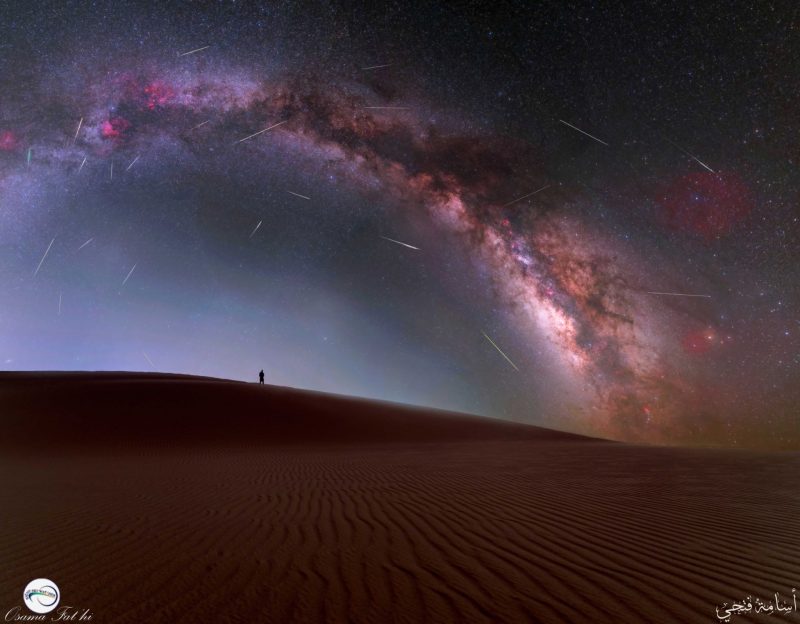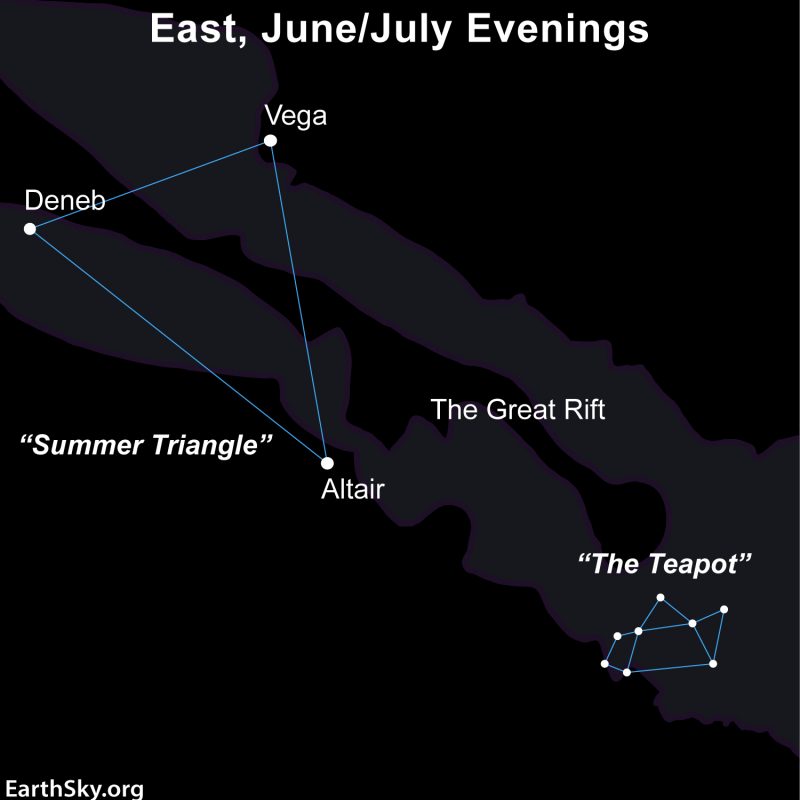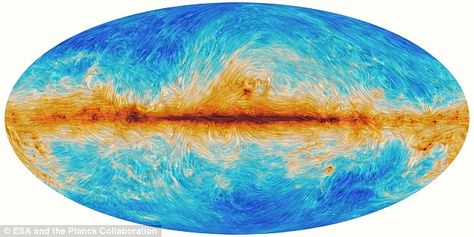
The Great Rift, or Dark Rift, is a long swath of gaseous clouds darkening a stretch of the Milky Way. And yes, it blocks the light from stars behind it. This dark cloudy strip – where stars are forming – is visible in a dark sky.
The Great Rift: How to see it
Summertime is the best time to look for the Great Rift. That’s because the Milky Way is prominent in our sky. Pick a night when the moon is out of the way. Under a dark sky, far from city lights, the Milky Way is easy to see at this time of year. It’s a whitish band stretching across the sky. If you want to see the Dark Rift, that’s easy, too, as long as you realize you aren’t looking for a bright object. You’re looking instead for dark lanes of dust running the length of the starlit Milky Way band.

You can see the Milky Way most easily in the evening from around June or July through about October. From a Northern Hemisphere location, you’ll see the thickest part of the Milky Way above the southern horizon. From the Southern Hemisphere, the thickest part of the Milky Way appears more overhead. Notice that the Milky Way band looks milky white, thus its name. The skies aren’t really black like ink between stars in the Milky Way. You’ll know when you see the Dark Rift. That’s because it looks as if someone took a marker and colored parts of the Milky Way darker.
Constellations along the Great Rift
The Dark Rift begins just above the constellation Sagittarius the Archer. Follow the Milky Way up until you see a black area in the Milky Way just before you get to the constellation Cygnus. Cygnus is shaped like a cross. Deneb is the brightest star in Cygnus and part of the famous Summer Triangle asterism. You can see the Dark Rift inside the Summer Triangle.
Be sure to keep your binoculars handy for any Milky Way viewing session. There are many interesting star-forming regions, star clusters and millions of stars that will capture your attention.

The Great Rift is dark due to dust
Stars are formed from great clouds of gas and dust in our Milky Way galaxy and other galaxies. When we look up at the starry band of the Milky Way and see the Dark Rift, we are looking into our galaxy’s star-forming regions. Imagine the vast number of new stars that will emerge, in time, from these clouds of dust.

Ancient cultures focused on dark areas, not light areas
You know those paintings where if you look at the light areas you see one thing, but in the dark areas you see something else?
The Great Rift is a bit like that. A few ancient cultures in Central and South America saw the dark areas of the Milky Way as constellations. These dark constellations had a variety of myths associated with them. For example, one important dark constellation was Yacana the Llama. It rises above Cuzco, the ancient city of the Incas, every year in November.
By the way, the other famous area of the sky that is obscured by molecular dust is visible from the Southern Hemisphere. It’s the famous Coalsack Nebula near the Southern Cross, also known as the constellation Crux. The Coalsack is another region of star-forming activity in our night sky, much like the Dark Rift.
Bottom line: The Great Rift or Dark Rift is a darkened swath of the Milky Way where new stars are forming. It’s best seen from a rural location away from light pollution.
The post The Great Rift is a dark swath in the Milky Way first appeared on EarthSky.
from EarthSky https://ift.tt/HrXcK2C

The Great Rift, or Dark Rift, is a long swath of gaseous clouds darkening a stretch of the Milky Way. And yes, it blocks the light from stars behind it. This dark cloudy strip – where stars are forming – is visible in a dark sky.
The Great Rift: How to see it
Summertime is the best time to look for the Great Rift. That’s because the Milky Way is prominent in our sky. Pick a night when the moon is out of the way. Under a dark sky, far from city lights, the Milky Way is easy to see at this time of year. It’s a whitish band stretching across the sky. If you want to see the Dark Rift, that’s easy, too, as long as you realize you aren’t looking for a bright object. You’re looking instead for dark lanes of dust running the length of the starlit Milky Way band.

You can see the Milky Way most easily in the evening from around June or July through about October. From a Northern Hemisphere location, you’ll see the thickest part of the Milky Way above the southern horizon. From the Southern Hemisphere, the thickest part of the Milky Way appears more overhead. Notice that the Milky Way band looks milky white, thus its name. The skies aren’t really black like ink between stars in the Milky Way. You’ll know when you see the Dark Rift. That’s because it looks as if someone took a marker and colored parts of the Milky Way darker.
Constellations along the Great Rift
The Dark Rift begins just above the constellation Sagittarius the Archer. Follow the Milky Way up until you see a black area in the Milky Way just before you get to the constellation Cygnus. Cygnus is shaped like a cross. Deneb is the brightest star in Cygnus and part of the famous Summer Triangle asterism. You can see the Dark Rift inside the Summer Triangle.
Be sure to keep your binoculars handy for any Milky Way viewing session. There are many interesting star-forming regions, star clusters and millions of stars that will capture your attention.

The Great Rift is dark due to dust
Stars are formed from great clouds of gas and dust in our Milky Way galaxy and other galaxies. When we look up at the starry band of the Milky Way and see the Dark Rift, we are looking into our galaxy’s star-forming regions. Imagine the vast number of new stars that will emerge, in time, from these clouds of dust.

Ancient cultures focused on dark areas, not light areas
You know those paintings where if you look at the light areas you see one thing, but in the dark areas you see something else?
The Great Rift is a bit like that. A few ancient cultures in Central and South America saw the dark areas of the Milky Way as constellations. These dark constellations had a variety of myths associated with them. For example, one important dark constellation was Yacana the Llama. It rises above Cuzco, the ancient city of the Incas, every year in November.
By the way, the other famous area of the sky that is obscured by molecular dust is visible from the Southern Hemisphere. It’s the famous Coalsack Nebula near the Southern Cross, also known as the constellation Crux. The Coalsack is another region of star-forming activity in our night sky, much like the Dark Rift.
Bottom line: The Great Rift or Dark Rift is a darkened swath of the Milky Way where new stars are forming. It’s best seen from a rural location away from light pollution.
The post The Great Rift is a dark swath in the Milky Way first appeared on EarthSky.
from EarthSky https://ift.tt/HrXcK2C

Aucun commentaire:
Enregistrer un commentaire